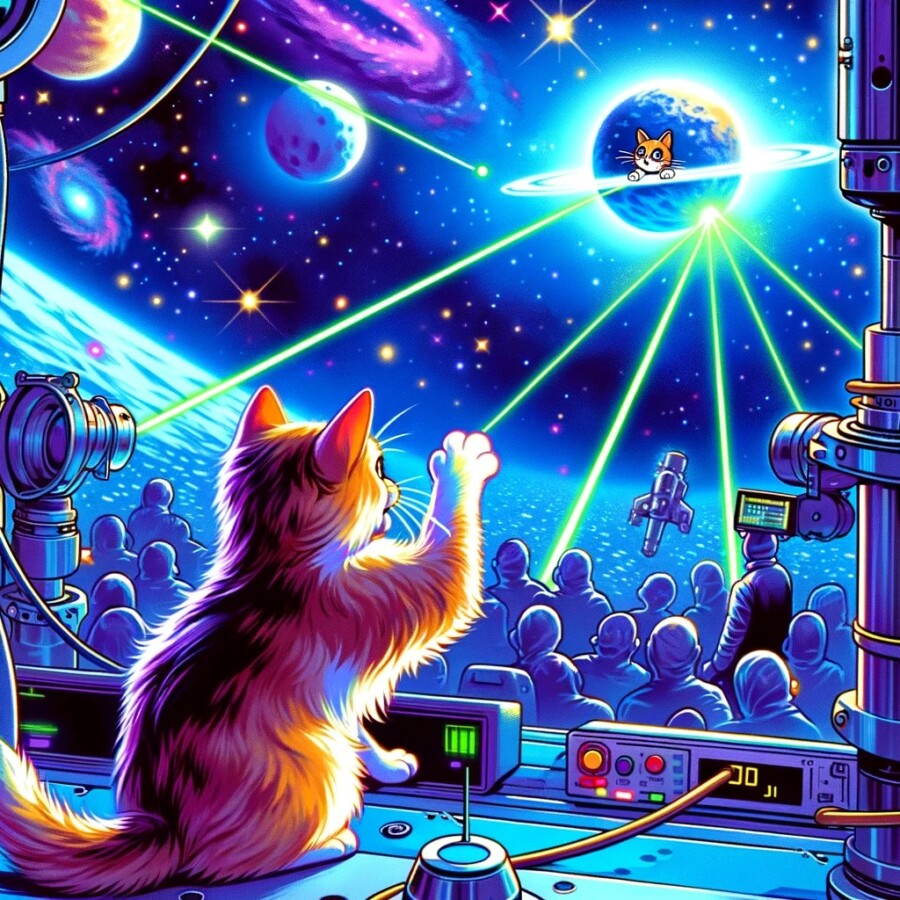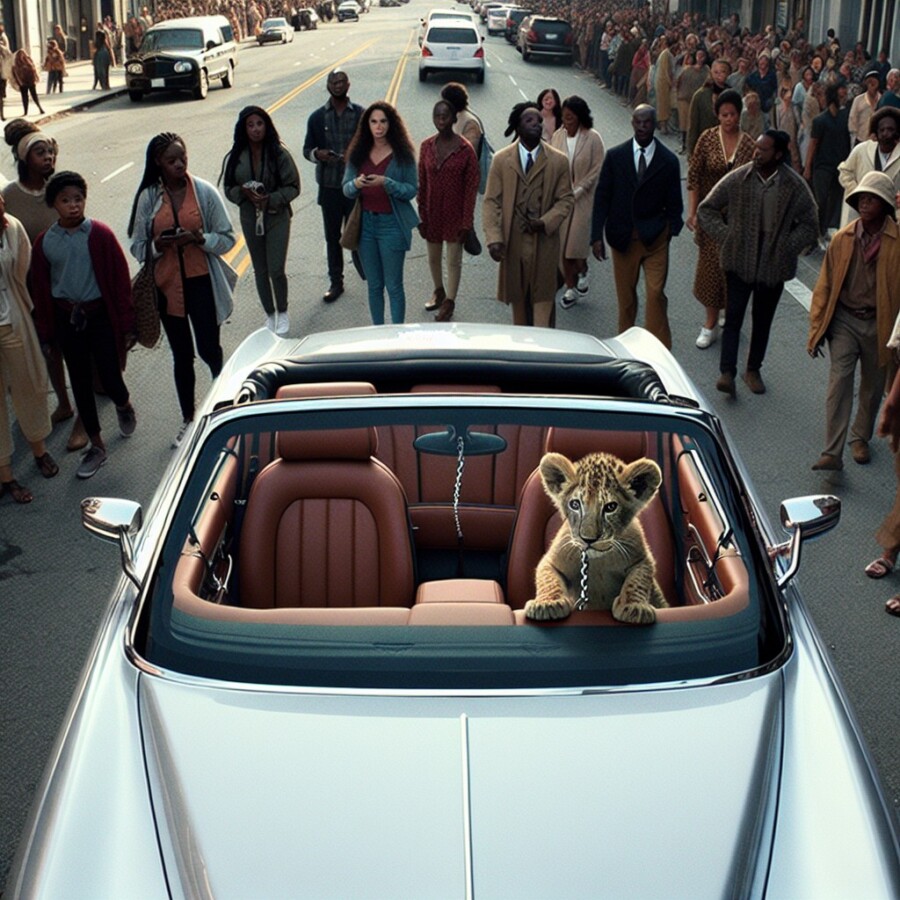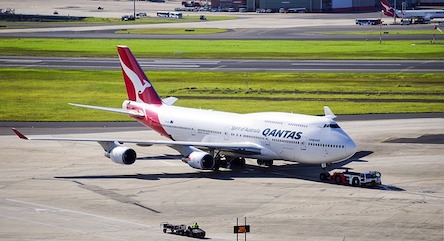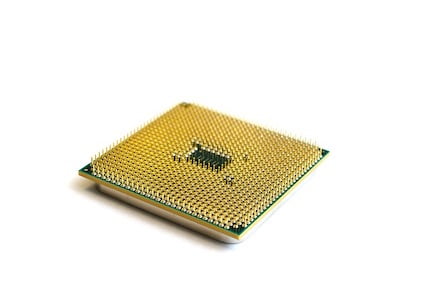Nasa recently achieved a remarkable feat by streaming a high-definition video of a cat from deep space back to Earth. The 15-second clip featured Taters the cat, who was seen chasing a laser beam. The footage traveled an astonishing distance of 19 million miles, which is about 80 times the distance from Earth to the Moon. Nasa conducted this experiment to test laser technology that could potentially improve communication with remote parts of the solar system. Taters, the star of the video, belongs to an employee of Nasa’s Jet Propulsion Laboratory in California. The video was uploaded to a spacecraft launched by SpaceX’s Falcon Heavy rocket and was streamed on 11 December.
Despite the vast distance, the video was transmitted faster than most broadband internet connections. It was received by the Hale telescope at the Palomar observatory and then downloaded. From there, it was streamed to the JPL and played in real-time. The connection between the observatory and the JPL base was actually slower than the signal transmitting the video from space. Nasa’s DesignLab played a crucial role in showcasing this technology, and the success of the experiment was celebrated by everyone involved.
The video, which can be found on YouTube, was designed to be memorable by overlaying technical mission information and details about Taters, such as breed, heart rate, and age. This demonstration project is part of Nasa’s Deep Space Optical Communications (DSOC) mission, which aims to explore communication beyond the Earth-Moon range. The DSOC mission is investigating technologies that can deliver higher bandwidth content from deep space to Earth. Radio frequencies struggle to handle the vast amount of data required to transmit high-quality images and videos over long distances. Nasa’s commitment to advancing optical communications is driven by the need to increase bandwidth to achieve future exploration and science goals.
Nasa’s achievement in beaming a cat video from deep space using laser technology marks a significant milestone in space communication. This breakthrough has the potential to revolutionize how we communicate during interplanetary missions and meet the increasing data transmission needs of future space exploration. By pushing the boundaries of optical communications, Nasa is paving the way for more efficient and effective communication with remote parts of the solar system.
Original news source: Nasa beams cat video from deep space with laser (BBC)
🎧 Listen:
Slow
Normal
Fast
📖 Vocabulary:
| 1 | remarkable | Worthy of attention; striking or unusual |
| 2 | feat | An achievement that requires great courage, skill, or strength |
| 3 | laser | A device that emits light through a process of optical amplification |
| 4 | broadband | High-speed internet access that is always on and faster than traditional dial-up access |
| 5 | observatory | A building or place equipped with telescopes and other instruments for observing celestial events |
| 6 | transmitted | Sent or conveyed from one place to another |
| 7 | bandwidth | The range of frequencies within a given band, especially that used for transmitting a signal |
| 8 | frequencies | Electromagnetic waves used for communication |
| 9 | overlaying | Placing one thing over another, typically so that both are still evident |
| 10 | breed | A particular variety or type of animal or plant |
| 11 | milestone | A significant point in the development or progress of something |
| 12 | interplanetary | Occurring or situated between planets |
| 13 | exploration | The action of traveling in or through an unfamiliar area in order to learn about it |
| 14 | optical | Relating to or using light to transmit images or data |
| 15 | paving | Laying the groundwork for future development or progress |
Group or Classroom Activities
Warm-up Activities:
– News Summary
Instructions: In pairs or small groups, have students read the article and summarize the key points in their own words. They can then share their summaries with the class and compare their understanding of the article.
– Opinion Poll
Instructions: Divide the class into groups and have each group discuss and debate the following question: “Do you think Nasa’s achievement in streaming a cat video from deep space is a significant milestone in space communication? Why or why not?” After the discussion, each group can present their opinions and the class can vote on which argument they find most convincing.
– Word Association
Instructions: Write the word “communication” on the board and have students brainstorm as many related words or phrases as they can in one minute. After the minute is up, go around the class and have each student share one word or phrase from their list. Encourage them to explain the connection between their word and the topic of communication.
– Sketch It
Instructions: Give each student a piece of paper and ask them to draw a visual representation of Nasa’s achievement in streaming a cat video from deep space. They can use symbols, images, or diagrams to convey the main idea of the article. After they have finished, have students share their drawings with a partner and explain their artistic choices.
– Pros and Cons
Instructions: Divide the class into two groups and assign one group to discuss the pros of Nasa’s achievement in streaming a cat video from deep space, and the other group to discuss the cons. After the discussion, each group can present their arguments to the class and engage in a debate. Encourage students to use evidence from the article to support their points.
🤔 Comprehension Questions:
1. What was the purpose of Nasa’s experiment to stream a high-definition video of a cat from deep space back to Earth?
2. How far did the footage of the cat traveling through space travel?
3. Who does Taters the cat belong to?
4. How was the video transmitted from deep space to Earth?
5. How did the speed of the video transmission compare to most broadband internet connections?
6. What role did Nasa’s DesignLab play in showcasing this technology?
7. What is the Deep Space Optical Communications (DSOC) mission?
8. Why is Nasa committed to advancing optical communications?
Go to answers ⇩
🎧✍️ Listen and Fill in the Gaps:
Nasa recently achieved a remarkable feat by streaming a high-definition video of a cat from deep space back to Earth. The 15-second clip featured (1)______ the cat, who was seen chasing a laser beam. The footage traveled an astonishing distance of 19 million miles, which is about 80 times the distance from Earth to the Moon. Nasa (2)______ this experiment to test laser (3)______ that could potentially (4)______ communication with remote parts of the solar system. Taters, the star of the video, belongs to an employee of Nasa’s Jet Propulsion Laboratory in California. The video was uploaded to a spacecraft launched by SpaceX’s Falcon Heavy rocket and was streamed on 11 December.
Despite the vast distance, the video was (5)______ faster than most broadband internet connections. It was received by the Hale telescope at the Palomar observatory and then downloaded. From there, it was streamed to the JPL and played in real-time. The connection between the observatory and the JPL base was actually (6)______ than the signal transmitting the video from space. Nasa’s DesignLab played a crucial role in showcasing this technology, and the (7)______ of the experiment was celebrated by everyone (8)______.
The video, which can be found on YouTube, was designed to be memorable by overlaying technical mission information and details about Taters, such as breed, heart rate, and age. This demonstration project is part of Nasa’s Deep Space Optical Communications (DSOC) mission, which aims to explore communication beyond the (9)______-Moon range. The DSOC mission is (10)______ technologies that can deliver higher bandwidth content from deep space to Earth. Radio frequencies struggle to handle the vast amount of data required to (11)______ high-quality (12)______ and videos over long distances. Nasa’s commitment to advancing optical communications is driven by the need to increase bandwidth to achieve future (13)______ and science goals.
Nasa’s achievement in beaming a cat (14)______ from deep space (15)______ laser technology marks a significant milestone in space communication. This (16)______ has the potential to revolutionize how we communicate during interplanetary missions and meet the increasing data transmission needs of future space exploration. By pushing the boundaries of optical communications, Nasa is paving the way for more efficient and effective communication with remote parts of the solar system.
Go to answers ⇩
💬 Discussion Questions:
Students can ask a partner these questions, or discuss them as a group.
1. What do you think about Nasa’s achievement in streaming a cat video from deep space?
2. How would you feel if you were able to communicate with remote parts of the solar system using laser technology?
3. Do you think it is important for Nasa to explore communication beyond the Earth-Moon range? Why or why not?
4. What is the significance of Nasa’s achievement in terms of future space exploration?
5. How do you think advancements in optical communications could benefit interplanetary missions?
6. Do you think it is necessary for Nasa to increase bandwidth for future exploration and science goals? Why or why not?
7. Have you ever used laser technology for communication? If so, what was your experience like?
8. How do you think the ability to transmit high-quality images and videos over long distances could impact our understanding of the universe?
9. What other applications do you think laser technology could have in space exploration?
10. Do you think the success of this experiment will lead to more funding and support for Nasa’s Deep Space Optical Communications mission? Why or why not?
11. How do you think this breakthrough in space communication could inspire future generations of scientists and engineers?
12. What challenges do you think Nasa might face in implementing laser technology for communication in deep space?
13. Do you think it is important for Nasa to continue pushing the boundaries of optical communications? Why or why not?
14. How do you think this achievement will impact the public’s perception of Nasa and space exploration?
15. Have you ever witnessed or experienced a technological breakthrough that had a significant impact on a particular field? If so, can you share your experience?
Individual Activities
📖💭 Vocabulary Meanings:
Match each word to its meaning.
Words:
1. remarkable
2. feat
3. laser
4. broadband
5. observatory
6. transmitted
7. bandwidth
8. frequencies
9. overlaying
10. breed
11. milestone
12. interplanetary
13. exploration
14. optical
15. paving
Meanings:
(A) High-speed internet access that is always on and faster than traditional dial-up access
(B) A significant point in the development or progress of something
(C) Electromagnetic waves used for communication
(D) A building or place equipped with telescopes and other instruments for observing celestial events
(E) Relating to or using light to transmit images or data
(F) A particular variety or type of animal or plant
(G) Placing one thing over another, typically so that both are still evident
(H) An achievement that requires great courage, skill, or strength
(I) Sent or conveyed from one place to another
(J) The range of frequencies within a given band, especially that used for transmitting a signal
(K) Worthy of attention; striking or unusual
(L) Laying the groundwork for future development or progress
(M) The action of traveling in or through an unfamiliar area in order to learn about it
(N) A device that emits light through a process of optical amplification
(O) Occurring or situated between planets
Go to answers ⇩
🔡 Multiple Choice Questions:
1. What was the purpose of Nasa’s experiment with streaming a video from deep space?
(a) To showcase Nasa’s DesignLab
(b) To test laser technology for improved communication
(c) To celebrate the success of the Hale telescope
(d) To transmit high-quality images and videos over long distances
2. How far did the video of Taters the cat travel?
(a) 80 times the distance from Earth to the Moon
(b) To the JPL base in California
(c) To the Palomar observatory
(d) 19 million miles
3. Where was the video received and downloaded?
(a) The Hale telescope at the Palomar observatory
(b) Nasa’s Jet Propulsion Laboratory
(c) The JPL base in California
(d) The Deep Space Optical Communications mission
4. What technology did Nasa use to transmit the video?
(a) Radio frequencies
(b) Laser
(c) Broadband internet
(d) SpaceX’s Falcon Heavy rocket
5. What is the purpose of Nasa’s Deep Space Optical Communications (DSOC) mission?
(a) To increase bandwidth for future exploration and science goals
(b) To test laser technology for improved communication
(c) To explore communication beyond the Earth-Moon range
(d) To showcase Nasa’s DesignLab
6. Why is Nasa committed to advancing optical communications?
(a) To increase bandwidth for future exploration and science goals
(b) To test laser technology for improved communication
(c) To celebrate the success of the Hale telescope
(d) To transmit high-quality images and videos over long distances
7. What milestone did Nasa achieve with the video transmission?
(a) Streaming a video faster than most broadband internet connections
(b) Revolutionizing communication during interplanetary missions
(c) Beaming a cat video from deep space using laser technology
(d) Paving the way for more efficient communication with remote parts of the solar system
8. How does Nasa’s achievement in space communication benefit future space exploration?
(a) By showcasing Nasa’s DesignLab
(b) By transmitting high-quality images and videos over long distances
(c) By celebrating the success of the Hale telescope
(d) By meeting the increasing data transmission needs
Go to answers ⇩
🕵️ True or False Questions:
1. The video featured Taters the cat ignoring a laser beam.
2. The video was transmitted slower than most broadband internet connections.
3. Nasa’s failure in beaming a cat video from deep space using laser technology marks an insignificant milestone in space communication.
4. The footage traveled a distance of 19 million miles, which is about 80 times the distance from Earth to the Moon.
5. Taters, the star of the video, does not belong to an employee of Nasa’s Jet Propulsion Laboratory in California.
6. The video was uploaded to a spacecraft launched by SpaceX’s Falcon Heavy rocket and streamed on 11 December.
7. Nasa conducted this experiment to test laser technology for improved communication with remote parts of the solar system.
8. Nasa successfully streamed a high-definition video of a cat from deep space back to Earth.
Go to answers ⇩
📝 Write a Summary:
Write a summary of this news article in two sentences.
Check your writing now with the best free AI for English writing!
Writing Questions:
Answer the following questions. Write as much as you can for each answer.
Check your answers with our free English writing assistant!
1. What was the purpose of Nasa’s experiment in streaming a video of a cat from deep space?
2. How far did the video travel and how does that compare to the distance from Earth to the Moon?
3. How was the video transmitted back to Earth faster than most broadband internet connections?
4. What role did Nasa’s DesignLab play in the success of the experiment?
5. Why is Nasa focused on advancing optical communications for future space exploration?
✅ Answers
🤔✅ Comprehension Question Answers:
1. The purpose of Nasa’s experiment was to test laser technology that could potentially improve communication with remote parts of the solar system.
2. The footage of the cat traveling through space traveled a distance of 19 million miles.
3. Taters the cat belongs to an employee of Nasa’s Jet Propulsion Laboratory in California.
4. The video was transmitted from deep space to Earth by being uploaded to a spacecraft launched by SpaceX’s Falcon Heavy rocket and then streamed in real-time.
5. The video transmission was faster than most broadband internet connections.
6. Nasa’s DesignLab played a crucial role in showcasing this technology.
7. The Deep Space Optical Communications (DSOC) mission is an initiative by Nasa to explore communication beyond the Earth-Moon range and investigate technologies that can deliver higher bandwidth content from deep space to Earth.
8. Nasa is committed to advancing optical communications in order to increase bandwidth and meet the future exploration and science goals.
Go back to questions ⇧
🎧✍️✅ Listen and Fill in the Gaps Answers:
(1) Taters
(2) conducted
(3) technology
(4) improve
(5) transmitted
(6) slower
(7) success
(8) involved
(9) Earth
(10) investigating
(11) transmit
(12) images
(13) exploration
(14) video
(15) using
(16) breakthrough
Go back to questions ⇧
📖💭✅ Vocabulary Meanings Answers:
1. remarkable
Answer: (K) Worthy of attention; striking or unusual
2. feat
Answer: (H) An achievement that requires great courage, skill, or strength
3. laser
Answer: (N) A device that emits light through a process of optical amplification
4. broadband
Answer: (A) High-speed internet access that is always on and faster than traditional dial-up access
5. observatory
Answer: (D) A building or place equipped with telescopes and other instruments for observing celestial events
6. transmitted
Answer: (I) Sent or conveyed from one place to another
7. bandwidth
Answer: (J) The range of frequencies within a given band, especially that used for transmitting a signal
8. frequencies
Answer: (C) Electromagnetic waves used for communication
9. overlaying
Answer: (G) Placing one thing over another, typically so that both are still evident
10. breed
Answer: (F) A particular variety or type of animal or plant
11. milestone
Answer: (B) A significant point in the development or progress of something
12. interplanetary
Answer: (O) Occurring or situated between planets
13. exploration
Answer: (M) The action of traveling in or through an unfamiliar area in order to learn about it
14. optical
Answer: (E) Relating to or using light to transmit images or data
15. paving
Answer: (L) Laying the groundwork for future development or progress
Go back to questions ⇧
🔡✅ Multiple Choice Answers:
1. What was the purpose of Nasa’s experiment with streaming a video from deep space?
Answer: (b) To test laser technology for improved communication
2. How far did the video of Taters the cat travel?
Answer: (d) 19 million miles
3. Where was the video received and downloaded?
Answer: (a) The Hale telescope at the Palomar observatory
4. What technology did Nasa use to transmit the video?
Answer: (b) Laser
5. What is the purpose of Nasa’s Deep Space Optical Communications (DSOC) mission?
Answer: (c) To explore communication beyond the Earth-Moon range
6. Why is Nasa committed to advancing optical communications?
Answer: (a) To increase bandwidth for future exploration and science goals
7. What milestone did Nasa achieve with the video transmission?
Answer: (c) Beaming a cat video from deep space using laser technology
8. How does Nasa’s achievement in space communication benefit future space exploration?
Answer: (d) By meeting the increasing data transmission needs
Go back to questions ⇧
🕵️✅ True or False Answers:
1. The video featured Taters the cat ignoring a laser beam. (Answer: False)
2. The video was transmitted slower than most broadband internet connections. (Answer: False)
3. Nasa’s failure in beaming a cat video from deep space using laser technology marks an insignificant milestone in space communication. (Answer: False)
4. The footage traveled a distance of 19 million miles, which is about 80 times the distance from Earth to the Moon. (Answer: True)
5. Taters, the star of the video, does not belong to an employee of Nasa’s Jet Propulsion Laboratory in California. (Answer: False)
6. The video was uploaded to a spacecraft launched by SpaceX’s Falcon Heavy rocket and streamed on 11 December. (Answer: True)
7. Nasa conducted this experiment to test laser technology for improved communication with remote parts of the solar system. (Answer: True)
8. Nasa successfully streamed a high-definition video of a cat from deep space back to Earth. (Answer: True)
Go back to questions ⇧













